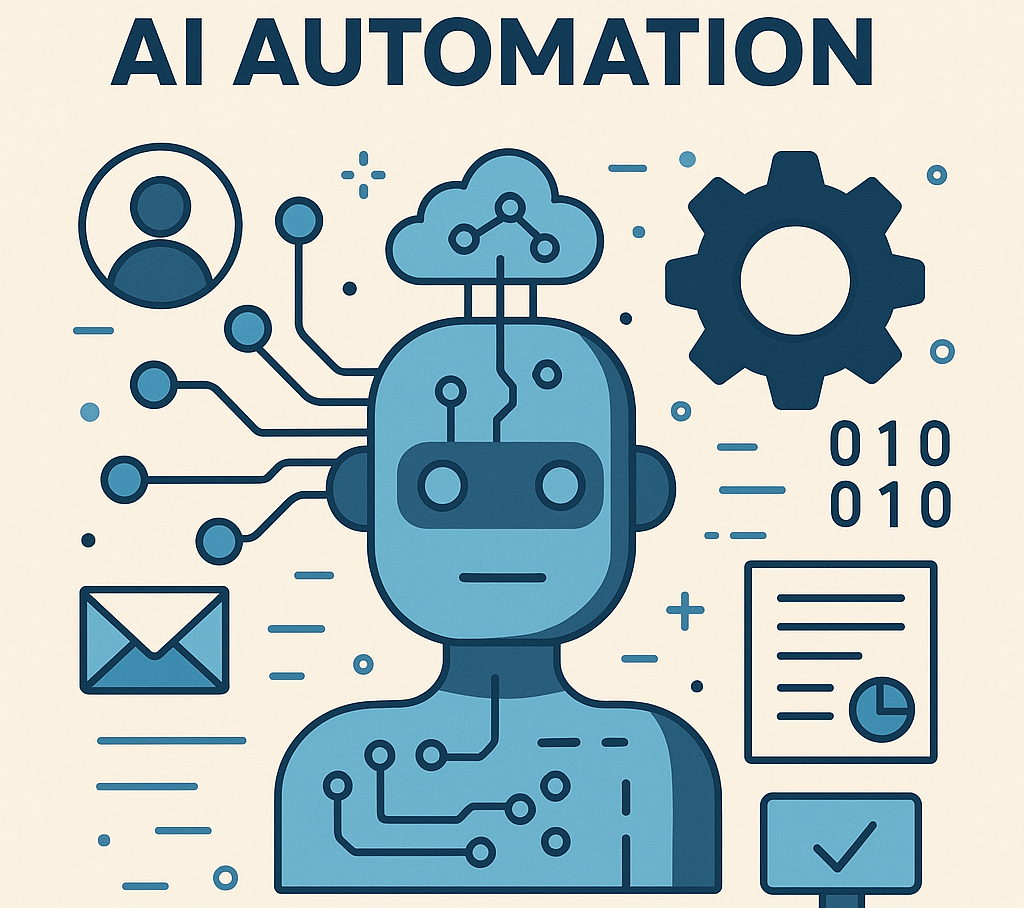What is AI Automation?
An overview of the AI automation
8/19/20252 min read


Introduction
In today’s business world, every minute counts. Companies are constantly looking for ways to save time, cut costs, and boost efficiency. Automation has been around for years through scripts, workflows, and robots, but the arrival of Artificial Intelligence (AI) has changed everything. We’re no longer just talking about machines following rigid rules—we’re talking about intelligent automation that can learn, adapt, and make decisions on its own.
🔍 Definition of AI Automation
AI automation is the use of artificial intelligence (including machine learning, natural language processing, and predictive algorithms) to automate business processes.
Unlike traditional automation, which simply follows pre-set rules (“if A, then B”), AI automation can:
Analyze complex data in real time,
Understand natural language (emails, chat, documents),
Adapt to changes in workflows and contexts,
Make context-based decisions without constant human supervision.
In short: AI automation doesn’t just execute—it understands and improves.
⚙️ How Does AI Automation Work?
Data Collection – AI gathers information from CRM, emails, websites, logs, and customer interactions.
Analysis & Understanding – Algorithms identify patterns, extract meaning, and detect anomalies.
Automated Action – The AI system triggers workflows, responses, or business processes.
Continuous Learning – Thanks to machine learning, the system improves over time, becoming more accurate and efficient.
📊 Real-World Examples of AI Automation
Customer Service: Smart chatbots that answer questions 24/7 with natural conversations.
Marketing: AI-driven lead segmentation and hyper-personalized email campaigns.
Finance: Fraud detection that flags unusual transactions instantly.
Human Resources: Automated CV screening and candidate shortlisting.
E-commerce: Personalized product recommendations based on user behavior.
🚀 Benefits for Businesses
Massive time savings – fewer repetitive manual tasks.
Error reduction – consistent and reliable processes.
Lower costs – less human effort wasted on low-value tasks.
Enhanced customer experience – faster, smoother, more personalized service.
Scalability – grow your business without proportionally increasing headcount.
⚠️ Challenges & Considerations
Data quality matters – poor data leads to poor automation.
Initial investment – setup, integration, and training are required.
Human oversight is still essential – AI supports decision-making but doesn’t replace strategy or creativity.
🎯 Conclusion: The New Standard of Competitiveness
AI automation is not just a trend—it’s the new standard for modern businesses. It allows companies to free up valuable time, reduce costs, and focus on what really matters: strategy, innovation, and customer relationships.
Failing to adopt AI automation today means risking being left behind tomorrow.

